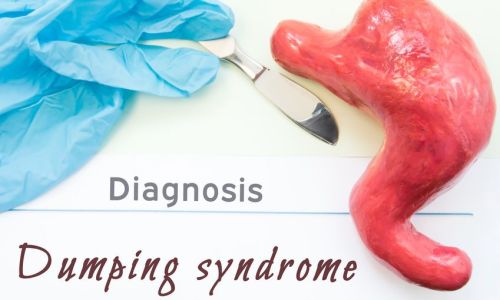 Dumping syndrome is also referred to as rapid gastric emptying and occurs when food is passed directly from your stomach pouch to the first part of the small intestine without undergoing digestion. Dumping syndrome can be classified into two phases which are early dumping syndrome and late dumping syndrome. Each type causes different symptoms and occurs at different times after eating. Ingested food is only mixed with the saliva rather than the stomach acid leaving most parts of undigested food intact. This article gives an in-depth view of dumping syndrome by looking at its phases, symptoms, causes, diagnosis, and available treatment options.
Dumping syndrome is also referred to as rapid gastric emptying and occurs when food is passed directly from your stomach pouch to the first part of the small intestine without undergoing digestion. Dumping syndrome can be classified into two phases which are early dumping syndrome and late dumping syndrome. Each type causes different symptoms and occurs at different times after eating. Ingested food is only mixed with the saliva rather than the stomach acid leaving most parts of undigested food intact. This article gives an in-depth view of dumping syndrome by looking at its phases, symptoms, causes, diagnosis, and available treatment options.
Phases of Dumping Syndrome
- Early Dumping Syndrome
This type of dumping syndrome occurs when large amounts of food from the stomach move unusually faster into the duodenum (the first part of the small intestine). The stomach fluid rushes into your small intestine after this food movement. The fluid is made up of a mixture of partially digested food, beverages, and stomach acid. Early dumping happens within 10 to 30 minutes after eating. Its symptoms may not be life threatening but can frighten an unsuspecting patient.
- Late Dumping Syndrome
The late dumping syndrome occurs when large amounts of sugar or glucose from foods and beverages move quickly into the first part of your small intestine. This makes your blood sugar level rise quickly than normal causing your pancreas to respond by releasing the insulin hormone. Insulin causes a rapid decrease in your blood sugar level resulting in a condition known as hypoglycemia (low blood sugar). Late dumping syndrome usually occurs between 1 to 3 hours after eating.
Symptoms
Early symptoms of dumping syndrome include abdominal cramping, nausea, vomiting, and diarrhea. A patient may also experience bloating, fast heart rate, sweating, and dizziness. Late symptoms of dumping syndrome are caused by low blood sugar, which can result in fatigue, shaking, hunger and confusion. An individual can have both early and late symptoms of dumping syndrome.
What Causes Dumping Syndrome?
After eating, the food from your stomach can take several hours to move from your stomach into the intestines. This allows some time for digestion to take place so that nutrients can be absorbed from the food being digested. It also ensures the food is broken down even more by the digestive juices present in the GI tract.
Early dumping can occur after major esophageal surgery or any stomach surgery. It is usually caused by the changes created in your stomach during the surgery. In normal digestion, the contents in the stomach are emptied into the duodenum in a controlled manner, breaking down larger food particles into smaller portions for easier digestion. However, changes in the anatomy of your GI tract causes dysfunction of this system as a side effect of surgery results.
Late dumping syndrome is caused primarily by changes in blood glucose because of the swift emptying of food into the duodenum. Symptoms associated with hypoglycemia are triggered because of the rapid increase of blood sugar released into the small intestine. This action triggers the secretion of insulin, which triggers a drastic drop in blood glucose levels.
Diagnosis
Typically, dumping syndrome is diagnosed based on the symptoms of a patient. Your doctor may order other tests such as a gastric emptying scan or an oral glucose tolerance test to confirm the diagnosis. This helps them to determine the necessary course of action to take when it comes to the type of treatment for your condition.
Treatment for Dumping Syndrome
Dumping syndrome is usually treated with medication and lifestyle changes related to how and what to eat. Individuals with mild symptoms of dumping syndrome should expect them to improve over time with a few changes in their diet and eating habits. Some foods that can help with your symptoms include fiber supplements, sugar replacements, complex carbohydrates and drinking enough water throughout the day.
It is important to avoid eating sugary foods and drinks to regulate your blood sugar levels. Other ways to lessen the symptoms of dumping syndrome is by eating controlled portions and chewing well before swallowing. It is also important to drink liquids or water at least 30 to 45 minutes after meals.
It is always important to talk to your health care provider if you experience any symptoms related to dumping syndrome. There are cases where medication or surgery may be required to correct the existing symptoms of dumping syndrome. However, mild symptoms can be managed with simple lifestyle changes to your diet and eating habits.
